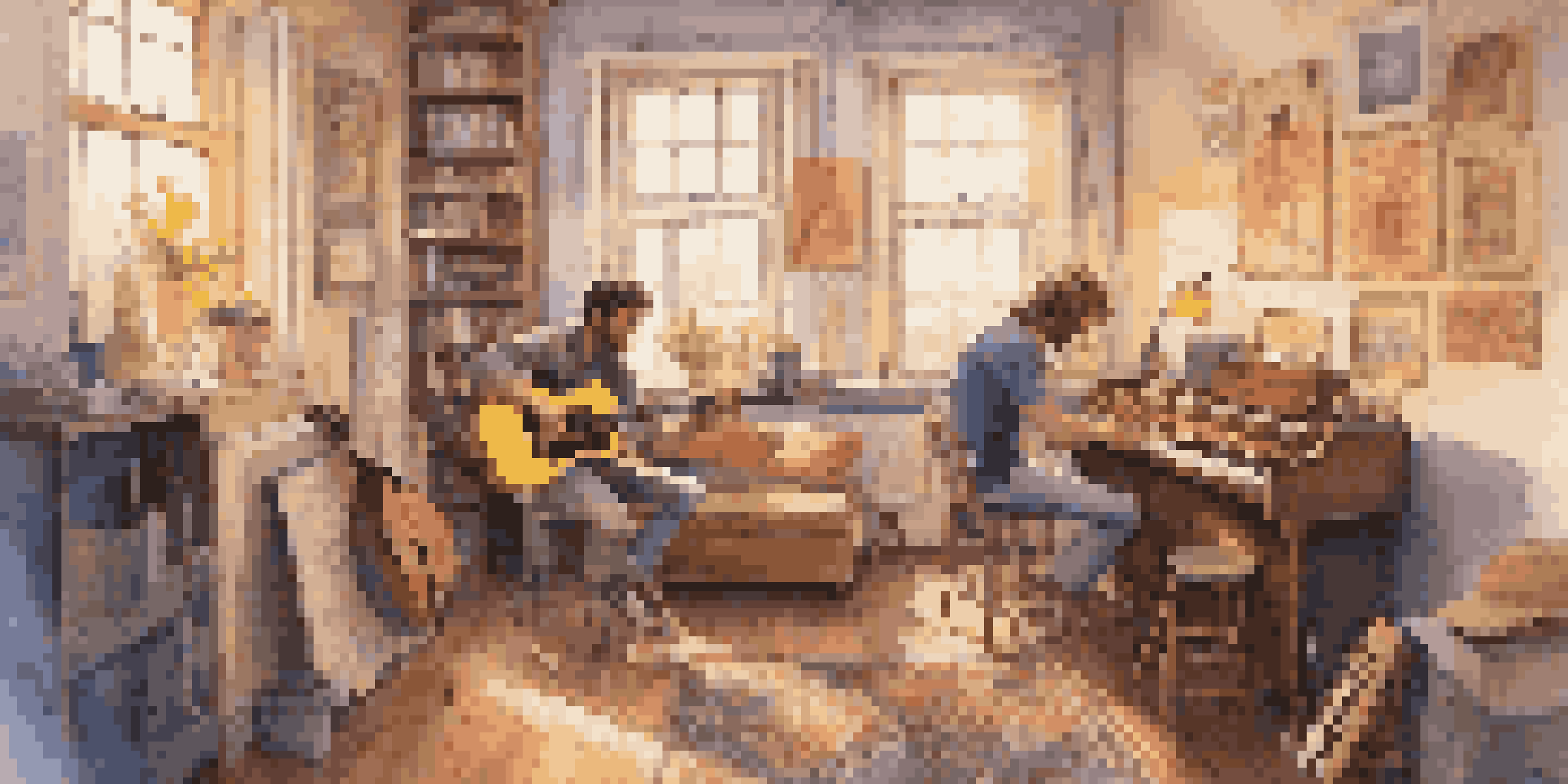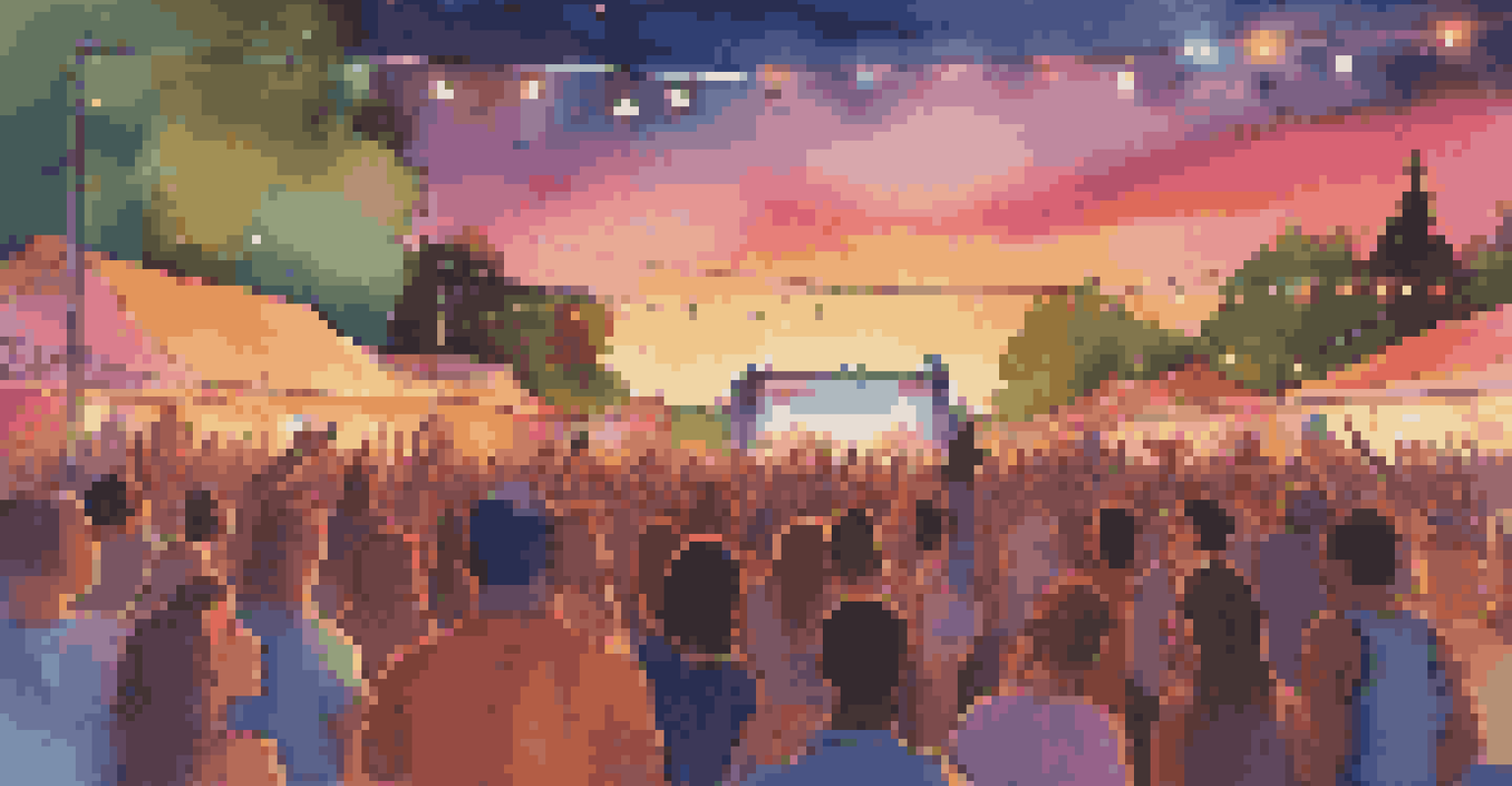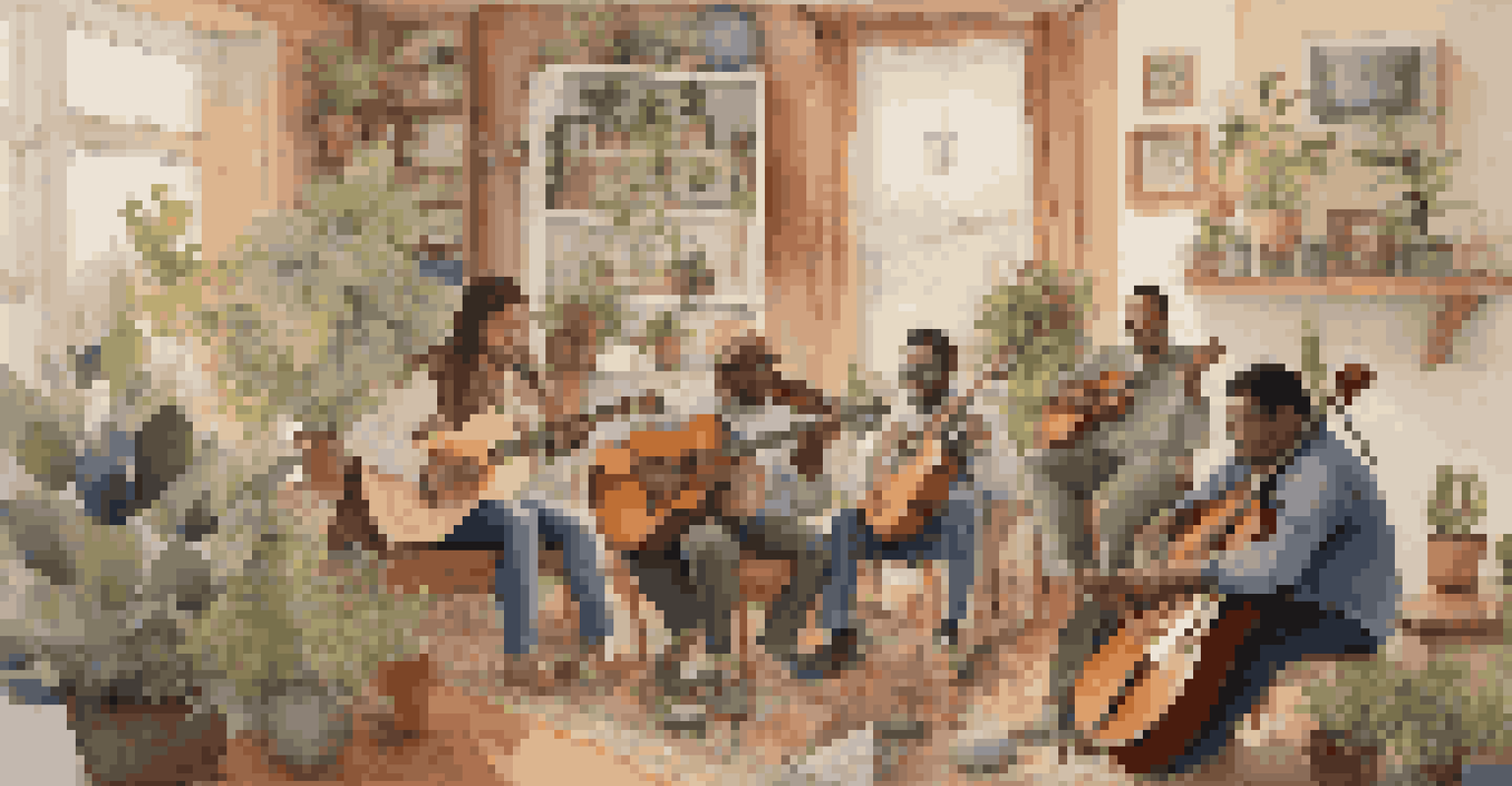The Emotional Connection: Music Collaboration and Bonding

Understanding the Emotional Power of Music
Music has a unique ability to evoke emotions, often transcending language barriers. It can make us feel joy, sadness, nostalgia, or even excitement, tapping into our innermost feelings. This emotional resonance is what makes music a powerful tool for connection, whether between individuals or within communities.
Music can change the world because it can change people.
When we listen to a song, we often find ourselves relating to the lyrics or the melody in a personal way. This shared experience can create a sense of belonging, as if the artist is speaking directly to our own lives. The emotions stirred by music can pave the way for deeper relationships, as people bond over their favorite tracks or shared memories tied to specific songs.
In collaborative settings, the emotional power of music becomes even more pronounced. When artists come together to create, they share their feelings and experiences, blending their unique perspectives into something new. This collaboration not only enhances creativity but also fosters a strong emotional connection among the musicians involved.
The Role of Collaboration in Music Creation
Collaboration in music is a beautiful dance of ideas and creativity. When musicians work together, they bring their distinct styles and influences, creating a richer sound than any individual could achieve alone. This teamwork nurtures a sense of community, as artists must communicate and compromise to bring their vision to life.

During the collaborative process, musicians often share personal stories or struggles, leading to deeper emotional connections. For example, a songwriter might reveal their heartache, inspiring fellow collaborators to contribute their own emotional experiences. This exchange can lead to powerful, relatable music that resonates with audiences on a profound level.
Music Evokes Deep Emotions
Music's unique ability to evoke a wide range of emotions fosters connections among individuals and communities.
Moreover, collaboration allows artists to challenge each other creatively. By bouncing ideas off one another, they push boundaries and explore new genres or techniques. This not only enhances their musical repertoire but also solidifies their bond, as they navigate the ups and downs of the creative journey together.
Building Bonds Through Shared Experiences
Shared experiences in music collaboration can create strong emotional bonds among artists. Whether it's writing a song in a cozy studio or performing at a festival, these moments become cherished memories that strengthen relationships. These experiences often lead to lasting friendships that extend beyond the music.
Where words fail, music speaks.
For instance, consider a band that tours together. The long hours spent on the road, late-night jam sessions, and the thrill of performing live create a unique camaraderie. These shared experiences foster a sense of belonging, where each member feels valued and understood, creating a supportive environment that fuels creativity.
Additionally, the act of creating music together can serve as a form of therapy. Artists often find solace in expressing their emotions through collaboration, allowing them to process feelings and heal. This mutual support not only enhances their musical output but also deepens their emotional connection.
The Impact of Music on Mental Health
Music is not just an art form; it can also have profound effects on mental health. Engaging in music collaboration can provide an emotional outlet for artists, allowing them to express feelings that might be difficult to articulate otherwise. This process can be incredibly therapeutic, helping individuals cope with stress, anxiety, or depression.
Research shows that making music releases endorphins, which can improve mood and overall well-being. For many artists, collaborating with others enhances this effect, as the shared joy of creating can amplify those positive emotions. The simple act of making music together can serve as a powerful reminder that they are not alone in their struggles.
Collaboration Enhances Creativity
When musicians collaborate, they combine their unique experiences and styles, leading to richer, more impactful music.
Furthermore, music has the ability to foster community and support networks. When artists collaborate, they often create a safe space where vulnerability is welcomed, encouraging open discussions about mental health. This openness can lead to greater awareness and understanding, breaking down stigma and promoting emotional well-being.
Creating Lasting Memories Through Music
Music has a remarkable ability to capture moments in time, creating lasting memories for those involved. Whether it’s the thrill of writing a hit song or the joy of performing for a live audience, these experiences become etched in the hearts of the artists. The collaborative nature of music often magnifies these memories, as they are shared and relived together.
For example, a group of musicians might recall the excitement of recording their first album. Each laugh, each challenge faced, and each breakthrough becomes part of their shared history. These memories not only enrich their relationship but also serve as a source of inspiration for future projects.
Moreover, these shared memories can resonate with fans as well. When audiences connect with the stories behind the music, it fosters a deeper appreciation for the work. This connection not only enhances the listening experience but also reinforces the bond between artists and their supporters.
The Power of Music to Unite Diverse Groups
Music has the power to bring together people from different backgrounds and cultures. When artists collaborate, they often blend various musical styles, creating something unique and beautiful. This fusion can highlight the richness of diversity, fostering understanding and unity among listeners and creators alike.
For instance, genres like world music often emerge from collaborations between artists of different cultural backgrounds. These projects can showcase the beauty of different traditions while celebrating the common human experiences that music conveys. In this way, music acts as a bridge, connecting people through shared emotions and stories.
Shared Experiences Build Bonds
Collaborative musical experiences create lasting friendships among artists, enriching both their relationships and their creative output.
Furthermore, collaborative music projects can raise awareness about social issues, bringing attention to causes that matter. When artists unite for a common purpose, they not only amplify their voices but also inspire others to join in, creating a movement that transcends borders. This collective effort fosters a sense of community, reminding us of our shared humanity.
Conclusion: The Lasting Impact of Musical Bonds
In conclusion, the emotional connection forged through music collaboration is profound and multifaceted. From the creative process to the shared experiences, these bonds shape not only the artists but also their audiences. The magic of music lies in its ability to unite, heal, and inspire, creating a tapestry of emotions that resonate with us all.
As we explore the world of music, it's essential to recognize the value of collaboration. By working together, artists can create something far greater than the sum of its parts. This collaborative spirit not only enriches the music itself but also nurtures the relationships that make the creative journey worthwhile.

Ultimately, music is a powerful reminder of our shared experiences and emotions. Whether we are musicians or listeners, we all play a part in this beautiful symphony of connections, celebrating the emotional bonds that make us human.